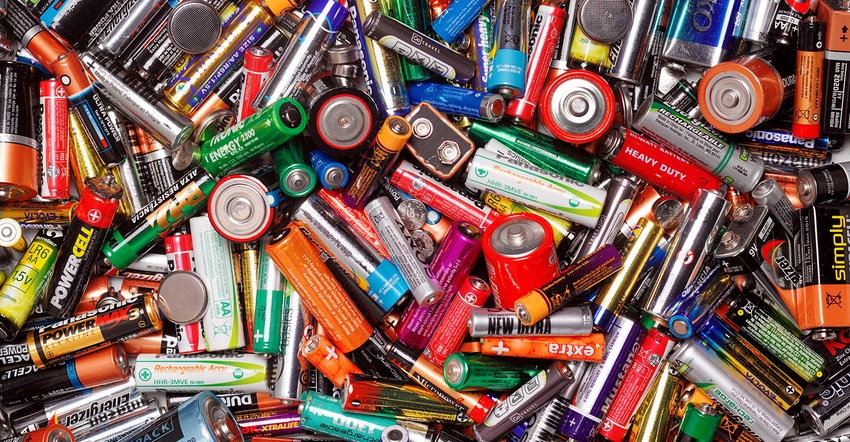
By Sybilla Gross
It might seem an unusual ingredient for plant fertilizer, but metal dust from spent household batteries are being tested as potential crop nutrient supplements by an Australian recycler and supplier of battery materials.
After collecting recycled everyday alkaline batteries from local pick-up points around the country and then shredding them, Lithium Australia NL, conducted short-term trials by testing the dust -- containing valuable trace element nutrients such as zinc and manganese -- on pots of wheat in glasshouses.
The tests, which were carried out at the company’s Envirostream Australia Pty recycling facility in Victoria, showed a “significant uptake” of the metals in wheat on local low-quality soil, according to managing director Adrian Griffin, though it was a slower process in comparison to fertilizer-grade sulphate products.
“We would anticipate that the results would be significantly better than that on more normal soils that we see in the wheat belts in Western Australia,” he said in an interview.
With annual sales totaling around 6,000 tons nationally, alkaline batteries -- used in typical household items -- are notoriously under-recycled, according to Lithium Australia, citing research showing that 97% of batteries end up in landfill.
The results have led Lithium Australia to commit to further larger-scale testing, aimed at evaluating the performance of the extracted metals against commercial fertilizer products. Those would likely kick off in the current growing season after the end of the financial year, said Griffin.
“We want to accelerate the trials as rapidly as we can,” he said. Along with domestic projects, the company was also considering rolling them out off-shore, he said. The trial mixtures would remain broad at this stage, rather than tailoring them for particular agricultural products and regions.
Secondary industries like scrap metal producers that can re-use batteries don’t have “much of an interest” in spent the alkaline versions -- the largest proportion of the facility’s collected batteries recycled at Envirostream, Griffin said. That’s because they had a lower value when compared to their longer-lasting lithium relatives, which are an essential component in electric vehicles, he said.
Still, only 9% of lithium-ion batteries are recycled globally, according to a company presentation, with the domestic rate at less that 3%. It’s estimated that the volume of spent batteries worldwide will grow to 7 million tons a year in the next 10 years and the potential value of metal in domestic spent lithium-ion batteries could reach A$3 billion ($2 billion) a year in the middle of the next decade.
As companies foray into research and development, developers are scrambling to fund mine projects to meet forecast demand for battery metals. Lithium producers alone will need an estimated $25 billion to $30 billion in financing over the next decade to meet demand, BNEF said in a February report.
Large mining companies are also moving into the fertilizer sector, betting that rising food demand and constraints on available farming land will boost the market for the products. BHP Group will consider next year whether to begin a $5.7 billion first stage of a potash mine in Canada, while Anglo American Plc in January moved to acquire a U.K. project aimed at producing crop nutrients.
--With assistance from David Stringer.
To contact the reporter on this story:
Sybilla Gross in Sydney at [email protected]
To contact the editors responsible for this story:
Edward Johnson at [email protected]
Keith Gosman, Phoebe Sedgman
© 2020 Bloomberg L.P.
Read more about:
ResearchAbout the Author(s)
You May Also Like




